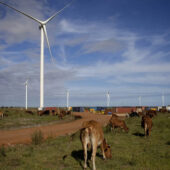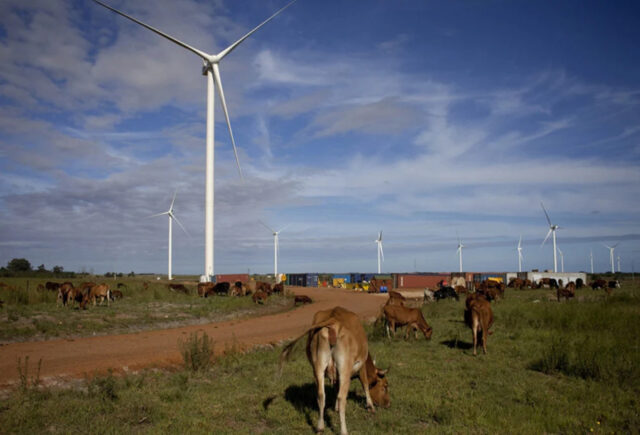A new climate fund launched by Schroders and BlueOrchard is tapping into the growing appetite for emerging market debt and investors’ demand for stricter ESG norms.

The Schroder ISF BlueOrchard Emerging Markets Climate Bond Fund will invest in projects targeting positive environmental change in emerging markets.
While it is early days in terms of the fund’s fundraising, discussions leading up to the launch of this fund indicated to BlueOrchard that there is appetite for investing in fund solutions that target climate change, and increasingly in emerging market assets, Michael Wehrle, Head of Investment Solutions at BlueOrchard, told Impact Investor.
The fund, launched last week, “will invest in mainly emerging markets green bonds and supporting the United Nations’ climate-related Sustainable Development Goals (SDGs),” both parties said in a joint press release.
The new fund aims to combine the two sides of the equation: “One is about achieving adequate financial returns and the other is about making an impact. Focusing on SDGs and climate action is really at the core of this fund strategy,” said Wehrle.
It is the latest collaboration between UK asset manager Schroders and its Swiss-based impact specialist BlueOrchard, in which Schroders Group bought a majority stake in 2019. The two parties first started working together last year with the launch of the BlueOrchard Covid-19 Emerging and Frontier Markets MSMEs Support Fund.
Emerging markets most vulnerable to climate change
The new fund will focus on “financing and refinancing projects with clear environmental, green or social benefits such as renewable energy, energy efficiency, green buildings and clean transportation.
It will allocate to sustainability and sustainability-linked bonds, whose outcomes are tied to the financing of social projects, as well as environmental initiatives,” the companies said.
According to Schroders research, emerging markets will bear the brunt of climate change, with the current pace of global warming estimated to be 3.6 degrees Celsius above pre-industrial levels in the first quarter of this year.
“Coastal communities in emerging markets are particularly vulnerable to the effects of climate change, and this was part of our investment rationale,” said BlueOrchard’s Impact Manager Nadina Stodiek.
Schroders expects the issuance of green bonds to double to $2 trillion by 2023, with emerging market assets set to increase rapidly.
Low bond yields drive investor interest
Investors have flocked to emerging market assets this year, driven by falling US bond yields and a weakening dollar, which reduces the cost of servicing debt in those regions.
If the first five-plus months of 2021 were a full year, it would be the biggest year for combined inflows (equities plus debt) into emerging markets since 2012, according to Lazard Asset Management.
“Investing in these growing opportunities will not only mean investors are contributing to a lasting positive impact to climate change mitigation in markets with the fastest growth, but are also delivering robust performance for their portfolios,” said Wehrle in a press release.
“Initially it will invest at least 50% into emerging markets, and then as we grow the target will be to have at least two-thirds in emerging markets,” said Wehrle. “The reason it’s not 100% is that we need to ensure that we have sufficient liquidity in the portfolio, but the focus is really firmly on emerging markets.”
Higher impact in emerging markets
The strategy also makes sense from an impact perspective, said Stodiek. She points out that $1 invested in an emerging market has more impact than a $1 invested in developed markets, because of the needs that these markets have, and because they trail developed markets in terms of the transition to low carbon and their resilience to climate change.
Managers like emerging markets impact specialist BlueOrchard, which has invested more than $8bn across more than 90 countries since it was founded 20 years ago, are busy creating instruments that capture both investors’ pursuit of strong returns in emerging markets and their interest in meeting the highest ESG standards.
“There are more green bonds, and issuance is picking up at a fast pace, as it is for sustainability bonds too,” said Stodiek. “These are relevant instruments that are making this space accessible to investors.”





